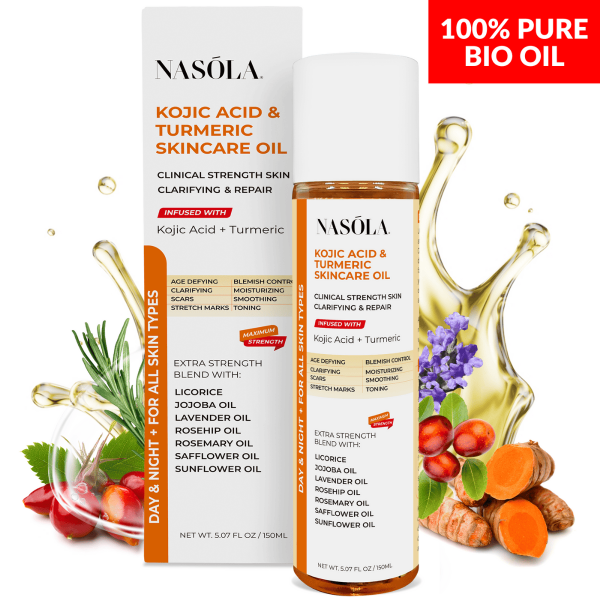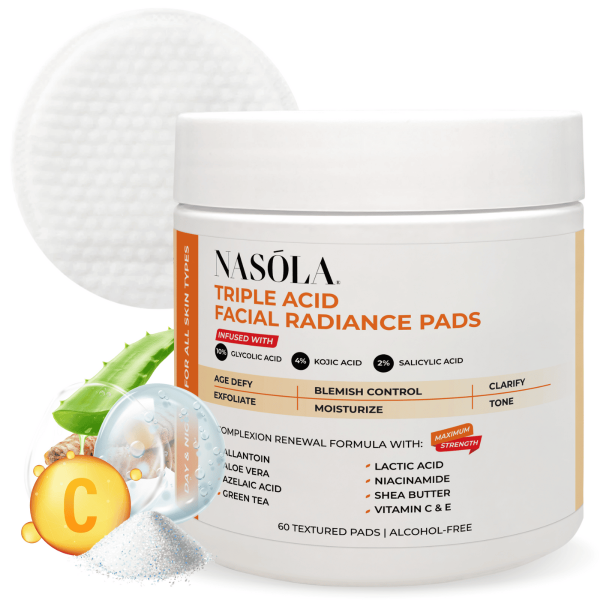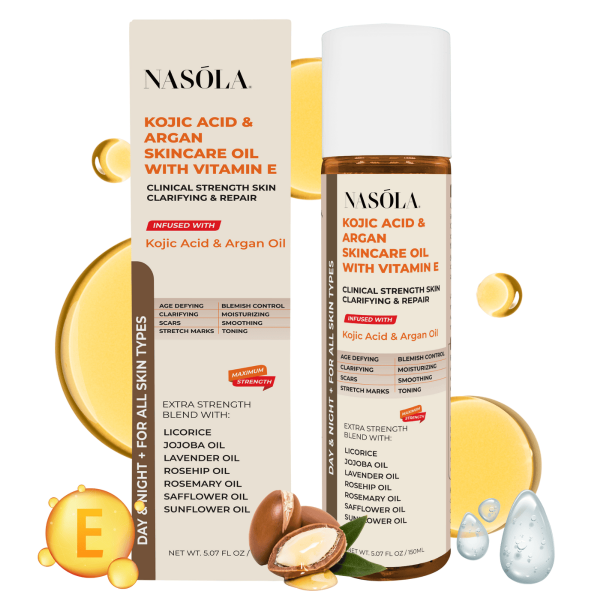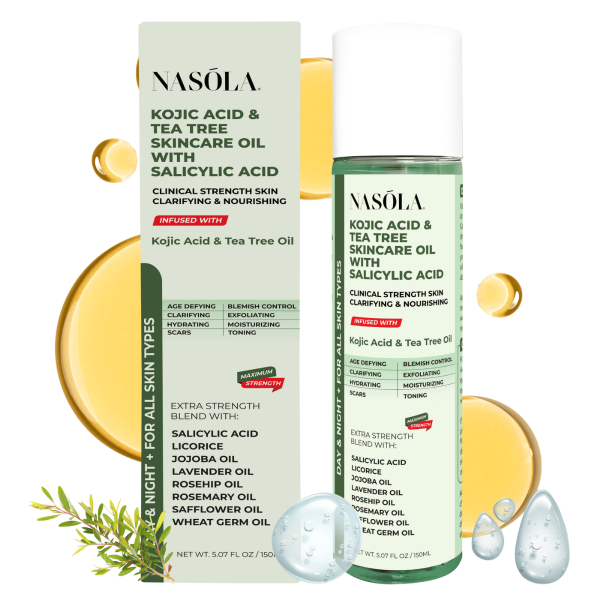Acne can feel a bit like that guest who shows up uninvited… and won’t leave.
We’ve all been there—switching cleansers, experimenting with serums, endlessly Googling what causes that one bump to show up the night before a big day.
And guess what? If your first instinct was to ditch all oily products for good… I totally get it.
But here’s the thing: the best oil for acne prone skin? It might just be the secret sauce your routine has been missing. Yes, oil—if it’s the right one—can actually help with acne, not make it worse.
In this post, I’m giving you the facts (and my favorites). We’ll break down exactly which oils work best, what ingredients matter, how to apply them, and how products like Nasola’s bio oil blends are game-changers for smoother, clearer skin.
Let’s get you glowing, shall we?
- Best Facial Oil for Acne Prone Skin: What Really Works?
- Face Oil for Acne Prone Skin: Key Benefits and How to Use
- Best Oil for Acne Prone Skin: How Argan Oil Helps Balance Skin
- How to Choose the Best Oil for Acne Prone Skin By Skin Concern
- Prepping Acne-Prone Skin for Facial Oils
- Real Results: Stories of Clearing Acne with the Best Oil for Acne Prone Skin
- Conclusion
- Frequently Asked Questions
Best Facial Oil for Acne Prone Skin: What Really Works?
Finding the best facial oil for acne prone skin isn’t about blindly grabbing the latest influencer favorite.
More often than not, choices driven by hype lead to clogged pores, irritation, or worse… that stubborn cluster of underground bumps.
So what should you actually look for instead?
Simple—oils rich in anti-inflammatory properties, those that hydrate without clogging pores, and formulas loaded with acne-targeting ingredients.
The best ones will soothe the skin barrier while gently working behind the scenes to balance out sebum levels.
And when it comes to oils that actually work, it’s not a mystery. Let’s take a closer look.
- Choose non-comedogenic base oils (like argan, jojoba, or sunflower seed oil).
- Go for active ingredients like kojic acid, turmeric, and salicylic acid.
- Opt for bio oils that blend hydration with brightening properties.
- Avoid oils with synthetic fragrances or pore-blocking fillers like coconut oil (yes… it’s sadly not always your friend).
Kojic Acid and Turmeric: A Dark Spot Duo
When dark spots hang around long after acne’s gone, it gets frustrating reaaal quick. That’s where kojic acid and turmeric shine—the dream team for fading those stubborn post-acne marks.
The Nasola Kojic Acid Turmeric Skincare Bio Oil blends kojic acid’s brightening power with turmeric’s natural ability to reduce redness and bacteria.
Kojic acid is known for targeting melanin pathways, which helps diminish discoloration gradually and effectively. Turmeric, with curcumin as its key compound, calms irritation, reduces blemishes, and gives your skin that golden glow (the good kind, not shine).
This combo doesn’t just fade marks but strengthens your overall skin tone—think smooth, even, and radiant. Applying it daily can show visible results within weeks—yes, weeks. The consistency pays off.
And yes, it does smell gently earthy which I personally love. It’s like skincare and spa-time in one bottle.
Hydration Without Clogging Pores
If your skin is acne-prone, your inner alarm bells probably go off when you hear the word “hydrating oil.” But stay with me!
The key? Use oils that mimic your skin’s natural sebum. That’s why oils like jojoba, sunflower seed, and argan are MVPs—they hydrate, soften, and help balance oil levels, meaning your skin panics less and produces less sebum.
Everyone thinks they have oily skin, but often, you’re just dehydrated. Dehydration = overactive sebaceous glands. Balanced skin? Less acne.
Nasola’s blendable oils use gentle, lightweight carriers as a foundation. No greasiness, no flare-ups—just a soft, plump glow.
Face Oil for Acne Prone Skin: Key Benefits and How to Use

Oils for acne? I know, it feels risky. But a well-made face oil for acne prone skin can actually calm inflammation, reduce flare-ups, and even heal your skin faster. It’s all about formulation… and approach.
These oils don’t coat your skin in grease—they treat. And the ingredients packed inside? Each one plays its part in a symphony of clearing, calming, and hydrating.
So how do you do this right?
- Use oils after water-based serums or exfoliants.
- Apply only 2-3 drops (trust me, less is more).
- Massage gently onto damp skin to help absorption.
- Reserve PM use if you’re nervous—build your routine gently.
Tea Tree and Salicylic Acid: A Power Pair for Active Acne
Have stubborn flare-ups that just keep interrupting your week? Say hello to tea tree oil and salicylic acid. Two words: breakout assassins.
The Nasola Kojic Acid Tea Tree Skincare Bio Oil with Salicylic Acid is measured magic. Tea tree oil is a natural antimicrobial force that helps purify pores and stop bacteria in its tracks.
Meanwhile, salicylic acid dives deep into pores, dissolving built-up oil and gunk.
Together? They fight pimples and prevent future ones. They also reduce redness and swelling which helps you feel more confident even before your skin clears up.
Just a few drops, and you’re letting a gentle powerhouse work overnight.
Proper Application Tips
Technique matters. Even the best formula won’t deliver if you’re layering wrong.
It starts with skin that’s prepped—not bone-dry, not sopping wet. Here’s my go-to routine:
- Cleanse with something gentle, not stripping.
- Follow up with toner or pads for light exfoliation.
- Tap in your usual serum or treatment.
- Seal it with your oil.
- Sleep. Wake up. Glow.
Be patient. Good skin doesn’t happen overnight—but with consistent care, it does happen.
Best Oil for Acne Prone Skin: How Argan Oil Helps Balance Skin
We seriously need to talk about argan oil.
It gets overlooked all the time, but argan is that steady friend who’s always got your back. The best oil for acne prone skin shouldn’t just clear—it should ALSO soothe and maintain skin health over time. Argan checks every box.
It’s rich in vitamin E, antioxidants, and… here comes the clutch—linoleic acid.
- Reduces inflammation
- Strengthens skin hydration
- Fades hyperpigmentation
- Improves elasticity over time
Nasola Kojic Acid Argan Skincare Bio Oil for Nourishment and Brightening
If your skin is dry and prone to flare-ups (yep, that’s absolutely a thing), the Nasola Kojic Acid Argan Skincare Bio Oil could be your new ride-or-die.
Blending brightening kojic acid with omega-rich argan oil, it nourishes without heaviness. Lighter than many creams, this oil smooths texture, softens tone, and brings back that glowing bounce.
It’s the solution for when your skin feels dull, acne-prone, and just… tired.
Linoleic Acid: The Essential Fatty Acid for Acne Control
There’s science behind why argan oil works so well for acne-prone skin.
Research shows acne-prone skin typically contains too little linoleic acid. This imbalance leads to clogged pores and inflammation.
By restoring linoleic levels through facial oils, you help unclog skin—without harsh scrubs or peels.
Oils rich in linoleic acid (like sunflower, hemp, and argan) offer that restoration—and the result? Fewer breakouts. Healthier, smoother skin.
So instead of stripping your skin dry, argan oil nourishes it back to balance.
How to Choose the Best Oil for Acne Prone Skin By Skin Concern

Acne isn’t one-size-fits-all. That’s why choosing the best oil for acne prone skin has to match your skin type and concern. Treating post-acne scarring is very different from managing active breakouts.
Instead of guessing or grabbing whatever sounds fancy, tune into your needs. Do you want to fight marks? Prevent flare-ups? Hydrate sensitively?
- For oily, inflamed skin: Tea tree + salicylic acid.
- For dullness or dark spots: Kojic acid + turmeric.
- For flaky, sensitive skin: Argan + kojic acid.
- For combo or textured skin: Gentle formulas with jojoba or sunflower seed oil.
For Post-Acne Marks and Uneven Tone
Post-acne dark spots hang around like old luggage. But there’s hope.
The Nasola Kojic Acid Turmeric Skincare Bio Oil works beautifully to even skin tone and fade discoloration over time. Kojic acid inhibits melanin formation, gradually lightening dark patches, while turmeric soothes and adds glow.
Use it morning or night—and apply sunscreen if using during the day, since kojic acid can heighten sun sensitivity. Results get better week by week. Patience + consistency = magic.
For Active Breakouts or Irritated Skin
If your breakouts feel angry and persistent, soothing and purifying your skin should be priority #1.
The Nasola Kojic Acid Tea Tree Skincare Bio Oil with Salicylic Acid is ideal. Every drop helps calm redness, dry out blemishes without causing flakiness, and prevent future acne from forming.
Lightweight, non-greasy, and powerful—it’s perfect for night application.
This oil is my go-to for “Uh-oh, it’s coming” moments. Protective, potent, and somehow gentle? Yes please.
Prepping Acne-Prone Skin for Facial Oils
Got your oil picked out? Great. Now let’s talk prep.
Because oils work best on clean, prepped skin—not congested pores or layered grime. Prepping doesn’t mean harsh scrubbing; it means thoughtful exfoliation, light toning, and application order that unlocks real results.
- Begin with clean skin
- Use chemical exfoliators over physical
- Apply oils last to seal in hydration
- Space out active ingredients to avoid irritation
Use Acid-Based Toners or Pads for Gentle Exfoliation
One essential prep step? Exfoliation.
Chemical pads like the Nasola Triple Acid Facial Radiance Pads provide a triple acid combo—glycolic, lactic, and salicylic. It’s the trio that gently dissolves dead skin, reduces buildup, and smooths your texture without irritating.
Perfect for making active ingredients (like kojic acid or salicylic acid) absorb deeper. Just swipe, wait a few minutes, and apply your bio oil. Done.
This is underrated prep magic.
Layer Oils as the Last Step in Your Routine
Let’s not forget —oil comes last.
Because of their structure, oils act as a sealant. You want everything else to penetrate first (vitamin C, peptides, niacinamide—whatever is part of your routine).
Oils go last to lock that moisture and prevent TEWL (transepidermal water loss… yes, that’s a thing).
Here’s your layer-by-layer guide:
- Cleanser
- Toner or Pads
- Serums
- Moisturizer (if needed)
- Facial Oil
Glazed donut skin incoming.
Real Results: Stories of Clearing Acne with the Best Oil for Acne Prone Skin
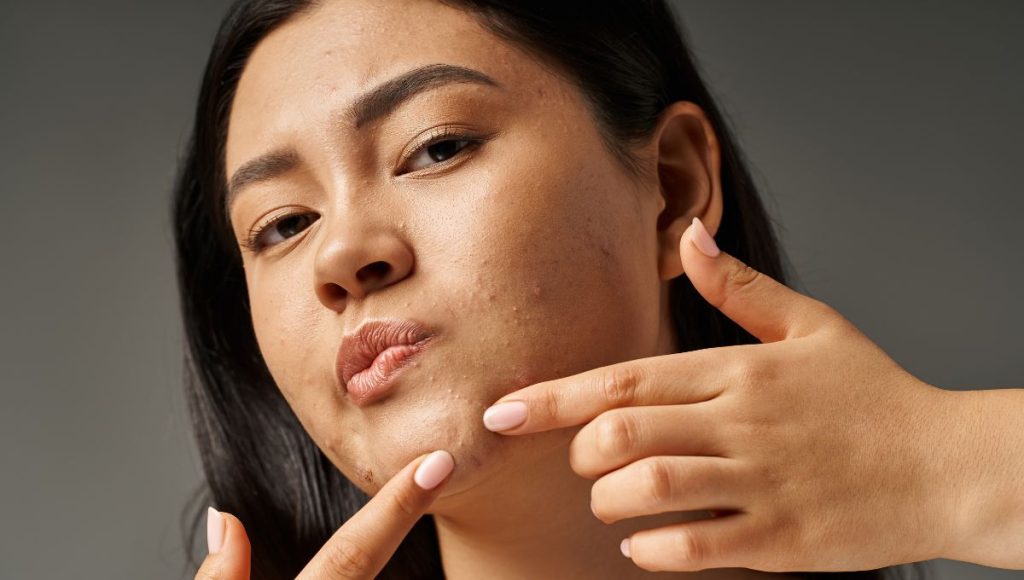
You’ve got the science. You’ve got the ingredients. But what about real use cases? Let’s spotlight how choosing the best oil for acne prone skin made a visible difference in day-to-day lives.
These results aren’t unicorn stories. They’re real, from consistent application and clean ingredient formulations like Nasola’s.
From Post-Acne Frustration to Brighter, Clearer Skin
One customer (we’ll call her Maya) shared how the Nasola Kojic Acid Turmeric Skincare Bio Oil helped fade years of acne scars.
She disliked wearing makeup daily but felt she had to. Within 6 weeks, her spots faded, her complexion evened out, and she slowly returned to work confidently with no base makeup.
She kept it simple—wash, tone, oil. Every night.
Targeting Acne Flare-Ups with Tea Tree and Salicylic Acid
Another story? Jordan, a 28-year-old with oily skin and monthly hormonal breakouts. He started using the Nasola Kojic Acid Tea Tree Skincare Bio Oil with Salicylic Acid nightly and saw fewer cystic bumps by the second week.
It became his 2-minute self-care ritual—and helped him feel clearer and more comfortable in morning meetings, date nights, and just… day-to-day confidence.
Conclusion
Skincare routines don’t need 15 steps to be effective—just the right ones.
Choosing the best oil for acne prone skin can feel overwhelming, but once you align your skin’s needs with quality ingredients like kojic acid, argan oil, turmeric, tea tree, and salicylic acid, everything begins to shift.
Standouts from Nasola’s collection not only hydrate but actively treat—blending function with self-care:
- Brighten scars with Nasola Kojic Acid Turmeric Skincare Bio Oil
- Nourish skin with Nasola Kojic Acid Argan Skincare Bio Oil
- Treat breakouts with Nasola Kojic Acid Tea Tree Skincare Bio Oil with Salicylic Acid
- Exfoliate and prep with Nasola Triple Acid Facial Radiance Pads
No fluff. Just thoughtful skincare that works.
Frequently Asked Questions
Yes, if you choose non-comedogenic oils, they not only hydrate but also balance out excess oil production, reducing breakouts over time.
The Nasola Kojic Acid Tea Tree Skincare Bio Oil with Salicylic Acid is highly effective for active breakouts, while Nasola Kojic Acid Turmeric Skincare Bio Oil targets dark spots and scarring.
Not necessarily. Nasola bio oils use non-comedogenic ingredients like argan oil and sunflower seed oil, which work harmoniously with your skin without clogging pores
Start with once a day, preferably at night. Listen to your skin and increase as needed. Some use facial oil twice daily without any issue.
Yes, just apply treatments first, then layer facial oil to lock everything in. Start slow and watch for irritation if you’re using multiple actives.
The Nasola Kojic Acid Turmeric Skincare Bio Oil lightens post-acne spots and evens out skin tone using kojic acid and turmeric.
Yes, they’re formulated with soothing botanicals. Always patch test first, especially if you have known sensitivities.
Nope. When used correctly, face oils can actually regulate sebum, helping your skin become less oily over time.
It’s essential! Exfoliating with something like the Nasola Triple Acid Facial Radiance Pads clears the way for active ingredients to absorb fully and work.
Absolutely. Men dealing with irritation, acne, or scarring have seen great results with Nasola, especially using tea tree and argan blends.


